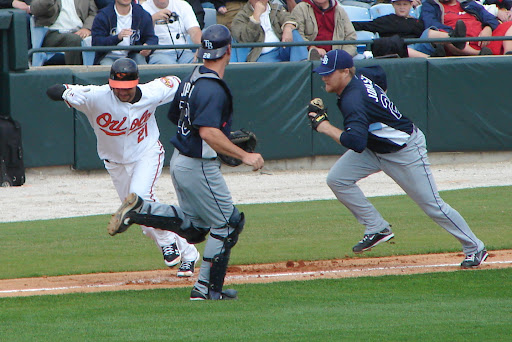There are a number of little things that players should do to perform a rundown correctly but, except for two of them, I'll save them for a future post. Here are the two priorities that must be done in order for a rundown to work with the least amount of throws. A team can come up short in a few of the other little things but not these.
 |
| Move forward to catch and sprint at the runner! (Photo by Jim Donten) |
Move forward to catch: The player who is receiving the toss from his teammate needs to be moving forward as he catches the ball, assuming the throw is accurate. As soon as the fielder sees the teammate about to release the ball, he takes a step forward to catch. When the runner is going full speed and the fielder moves forward as he catches the ball, the runner will usually just run into the tag since he cannot stop and turn around fast enough. Catching the ball standing still allows the runner more time to change directions because it takes time for the fielder to catch and then get started running. Moving forward to catch eliminates this lag time.
When practicing this drill, do it without runners first so players can focus on the two priorities - running as fast as they can and moving forward to catch. Introduce runners to the drill after the priorities are met.

No comments:
Post a Comment